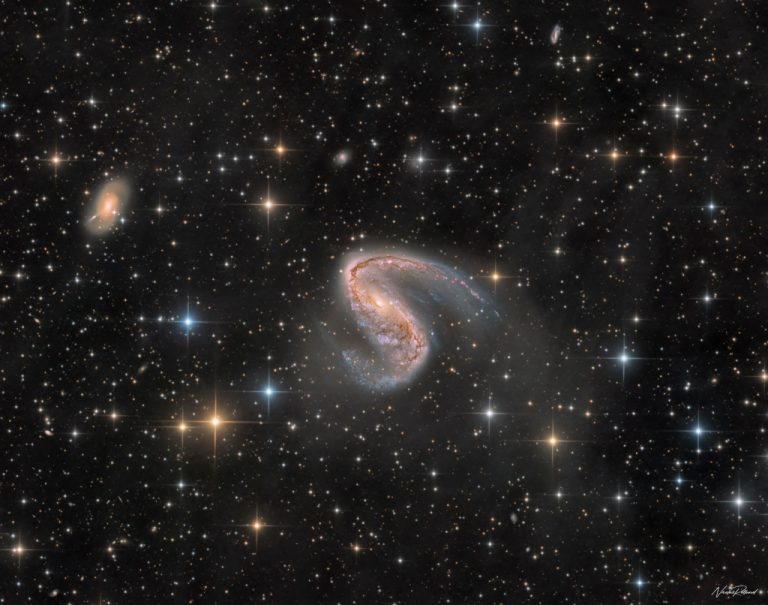2023年7月1日 Three Galaxies in Draco Image Credit & Copyright: David Vernet, Jean-François Bax, Serge Brunier, OCA/C2PU Explanation: This tantalizing trio of galaxies sometimes called the Draco Group, is located in the northern constellation of (you guessed it) Draco, the Dragon. From left to right are face-on spiral NGC 5985, elliptical galaxy NGC 5982, and edge-on spiral NGC 5981, all found within this single telescopic field of view that spans a little more than the width of the full moon. While the group is far too small to be a galaxy cluster, and has not been catalogued as a compact galaxy group, the three galaxies all do lie roughly 100 million light-years from planet Earth. Not as well known as other tight groupings of galaxies, the…










